AMG 1/48 Bf-109A
Messerschmitt began work in 1933 on a four passenger light “sporting aircraft” of cantilever low wing monoplane design, with retractable landing gear. The BFW M.37 was completed in the spring of 1934. Later redesignated Bf 108 Taifun ("Typhoon"), it was entered in the fourth Challenge de Tourisme Internationale. While it did not win any of the events, its performance impressed the Reichluftfartministerium sufficiently to earned the Bf-108 a production contract.
Before the Bf 108 had made its first flight, Messerschmitt learned the RLM was about to issue a new specification for a modern fighter, to be powered by the Junkers Jumo 210 and to be capable of at least 280 mph. Officially, most German aircraft manufacturers were invited to submit designs; unofficially, only Arado, Heinkel, Fieseler or Focke Wulf could expect serious consideration. Erhard Milch, who hated Willi Messerschmitt and had done everything he could to destroy Messerschmitt's business, did not even inform the company of the competition. However, unknown to Milch, Hermann Göring, had sent a confidential message to Messerschmitt, ordering him to develop "a lighting fast courier plane which needs only to be a single seater." It was obvious to Messerschmitt that Göring wanted to see him produce a fighter.
The design team at BFW's Augsburg factory - Robert Lusser, Richard Bauer and Hubert Bauer commenced the design of a single-seater that would incorporate the Bf 108's features: a monoplane with retractable landing gear, enclosed cockpit, leading edge slots and trailing edge flaps.
The Bf 109V1 was rolled out on August 5, 1935, powered by a 675 hp Rolls Royce Kestrel engine in place of the unavailable Jumo. Evaluation flights began at Rechlin and revealed the Bf-109 to be in advance of anything else flying. The Bf 109V2, which appeared in October, introduced the 610 hp Jumo 210A as well as a strengthened undercarriage, while the Bf 109V 3, delivered in June 1936, was the first to be armed with an engine mounted 7.92mm MG 17 machine gun.
Luftwaffe pilots were at first afraid of the airplane, and the thoroughly-pedestrian Heinkel He-112, with a low landing speed and an open cockpit, appeared to be the winner until Ernst Udet flew the Bf-109V2 and declared it superior to all others in the competition. Ten pre-production Bf 109B 0s were ordered in the summer of 1936, followed shortly by two events that would affect the Bf 109's fate.
In June 1936, the same month that the Bf-109 entered pre-production, the Royal Air Force announced production contracts for 600 Hawker Hurricane fighters and 310 Supermarine Spitfires. The threat posed by those new British fighters added urgency to Germany's fighter development efforts.
The other major event was the revolt of conservative elements under General Francisco Franco y Bahamonde against the Republican government of Spain in July, 1936, followed by the dispatch of German aircraft to Franco's aid.
That November, Luftwaffe volunteers were assigned to the Condor Legion to fight for Franco's Nationalists. At about the same time, the Soviet Union sent aircraft and pilots to aid the Spanish Republic, including the Polikarpov I 15 biplane and the I 16, the world's first low wing monoplane fighter with retractable landing gear and an enclosed canopy. Both Soviet fighters completely outclassed the Condor Legion's Heinkel He 51 biplanes.
As a result, the Luftwaffe rushed the Bf 109V4 to Spain in December, 1936, followed in January by the V3 and V6 prototypes, and 15 Bf-109A fighters, the first of which left the production line in February 1937. In May, the first of 55 Bf-109B fighters arrived.
The Condor Legion's first operational unit to fly the Bf-109, 2. Staffel of Jagdgruppe 88 (2.J/88) commanded by Oberleutnant Günther Lützow, began receiving the new Bf-109s in March, 1937. The unit was initially plagued by accidents, but the pilots soon met the challenge of taking off and landing on a narrow track undercarriage in an airplane that tended to drop its left wing, applying plenty of compensation with the rudder. 2.J/88 commenced operations over the Brunete salient on July 10, 1937.
The Bf 109B and its principal rival, the I 16, were closely matched. The Bf 109B was faster in level flight and in a dive, while the I 16 had a superior climb rate and maneuverability. Republican ace Andres Garcia Lacalle stated in his memoirs that the I 16 was superior up to 3,000 meters (9,840 feet), but from that altitude upward, the Bf 109B's performance was superior to that of the I 16.
The Bf-109B drew first blood on July 8, 1937, when Leutnant Rolf Pingel and Unteroffizier Guido Höness claimed two SB 2 bombers, though the Republicans gave only one of those two losses to a Bf 109, the other falling victim to a C.R.32. A series of air battles fought on July 12 resulted in the downing of two Aero A 101s by Höness, an SB 2 by Pingel and three I 16s by Pingel, Feldwebel Peter Boddem and Feldwebel Adolf Buhl. At the same time, Höness became the fist Bf-109 casualty. The victor was when he was shot down and killed while attacking another SB 2 by an I-16 flown by Frank Tinker, an American flying for the Republic.
Perhaps the outstanding Luftwaffe pilot to fly in the Spanish Civil War was Oberleutnant Werner Mölders, who arrived in Spain in early 1938 to take command of 3.J/88. During the second Ebro campaign, between July and October 1938, Mölders developed the most significant fighter tactic, he called the Vierfingerschwarm ("four finger formation"). This combined two Rotte, the basic two man element within a Staffel, into a loose but mutually supportive team, creating an infinitely flexible offensive and defensive unit, which has been used by every air force ever since. When Mölders left Spain at the end of 1938, he was the leading ace of the Condor Legion, with 14 victories.
Guided by lessons learned in Spain, Messerschmitt produced a rapid succession of improved Bf-109s. 19 Bf 109C's, with a fuel injected Jumo 210Ga engine and four machine guns, arrived in Spain in the spring of 1938, followed by 9 Bf 109D's in August, which combined the Bf 109C's four gun armament with the Bf 109B's carburetor equipped Jumo 210Da engine. In early 1939, just before the end of the Civil War, 44 Bf109Es, powered by the new Daimler-Benz DB 601, arrived. Following the end of the war, those Bf-109s which had survived were given to the Spanish Air Force, where many served into the 1950s.
Hobbycraft produced the early Bf-109 some 25 years ago. The kits were adequate for the time but suffer from low production value and accuracy. Classic Airframes produced early Bf-109s 10 years ago which were a great improvement, but are no longer in production and command expensive prices from collectors.
AMG has now produced the early Bf-109 in the A, B, C, and D, versions, with each kit different from the other in the various detail differences between sub-types (unlike the Hobbycraft kits that were essentially the same kit with different markings).
These are limited-run kits and require attention be paid to cleaning up parts where there is flash, and being certain to clean off all sprue nubs. The usual rule of test fit three times before gluing once applies. Clear parts are a bit thick, but are commendably clear, and various details such as seat belts and radiator faces are supplied in photo-etch. Decals are provided for four different aircraft and are of good quality.
As I said, this is a limited-run kit and requires care in cleaning up parts and test-fitting. A well-known modeler at The Other Place has declared the model “very difficult” and published photos of it with putty over every joint. That was not my experience. Taking the time to clean up parts, and test-fitting and modifying where necessary until I was completely satisfied with the fit before gluing, resulted in a model that only required putty along the centerline of the upper cowling and the lower radiator.
I first assembled the wing, which presented no problems at all, then painted and assembled the cockpit - again without problems.
The nose is made up of eleven parts and is quite fiddly. I ended up assembling the upper sections to the fuselage and the lower sections to the extended nose section of the wing subassembly. With careful planning and test-fitting, everything came together and when I assembled mated the fuselage and wing subassemblies, the careful test-fitting paid off with good fit throughout. As I said, I only had to use putty on the center lines of the upper engine cowling and the lower radiator cowling.
I used the upper forward nose part with the three openings, since I had decided to make a model of a modified Bf-109A as seen in Spain. This meant I also used the two-bladed metal prop and spinner, rather than the wooden prop that is also included in the kit.
Most people have assumed that Bf-109s in Spain were uniformly RLM63 light grey on the upper surfaces and RLM65 light blue on the lower surfaces. As with pretty much everything Luftwaffe, the truth is more complex.
According to information supplied by Lynn “Mr. Bf-109" Richter, the early Bf-109As and Bs first sent to Spain in 1937 were painted in 70/71/65. This paint weathered badly in Spanish conditions and was not an appropriate camouflage. The surviving airplanes were repainted in 63/65 that December, and all Bf-109s sent to Spain after the fall of 1937 arrived 63/65. Some may have had field camouflage applied later.
I used Tamiya Black Green XF-27, Dark Green XF-61 and Light Blue XF-23, masked to create a “hard edge” splinter camouflage following the excellent painting diagram supplied in the kit instructions. I first painted the white wing tips and rudder and masked them off. The camouflage was extensively lightened to simulate Spanish sun-fading.
I used Aeromaster's 48-459 “Spanish Civil War Part 2" decals which went down without problem. Kit decals were used for all stenciling, and were also problem-free.
I unmasked the canopy and attached it open. I used the resin main gear doors which are modified to the shape of those used on the Bf-109A (no “notch” at the lower rear). I substituted Eduard plastic main tires for the rubber tires supplied in the kit.
This is not a kit for a beginner, but anyone with some experience building limited-run kits, who is willing to take the time to clean up and test fit parts, and put some thought into the assembly of the nose, will be rewarded with what is the best early 109 model currently available. The surface detail is petite and the completed model can sit among your Tamiya and Eduard 109s without a problem. Highly recommended for 109 fans.
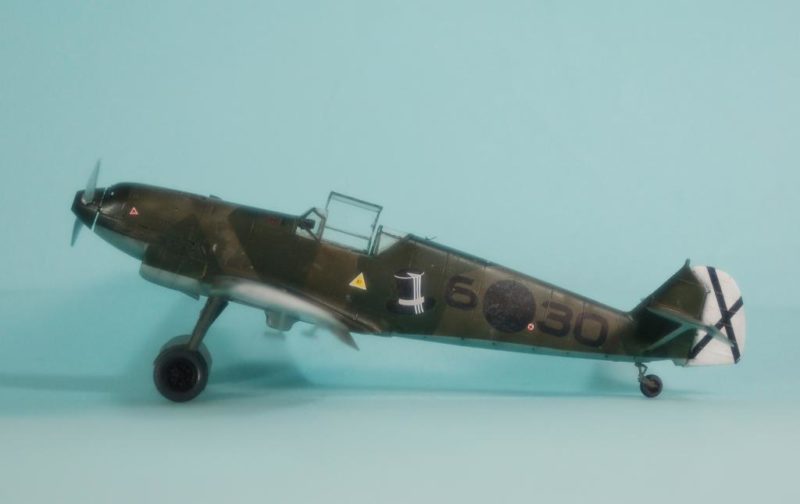
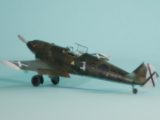
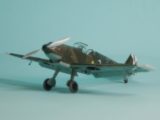
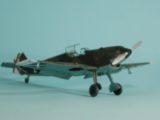
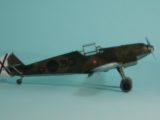
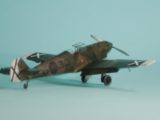
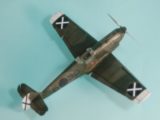
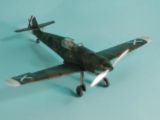
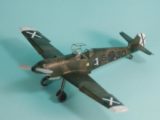
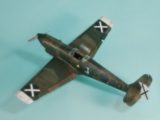
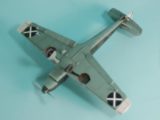
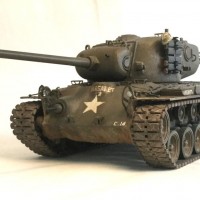
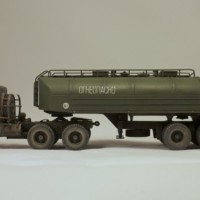
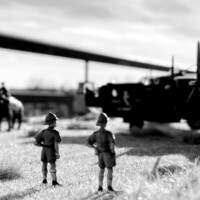
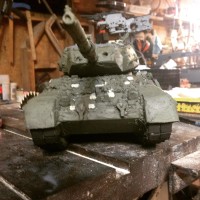
Nice build, Tom! Waiting for this kit since last year, and now I want it even more! Also, AMG plans to downscale it to 1/72.
Another superb offering, Tom! I like the look of the aircraft with the 2 bladed props of these early birds. Also, thanks for the detailed write-up ... it's always nice to learn some more history regarding these "Classics."
Never noticed a -109 with a "flat-nosed" spinner before...must be specific to the A model, huh? I like the paint scheme.
They had that kind of spinner up through the E-4
Really...? I MUST be gettin' old.
Yet, another embarrassment of riches on a modeling form when it comes to a written article. Almost a chapter to a good book. I've read about the AMG 109s and have come a cross some photos of parts but, this is the first build up. Appreciate you time and interest in building and writing up this kit TC.
As a Pre-W.W. II development period fan, there's only one word that can describe your Messer... COOL! ?
Very nice looking aircraft and great history. Never heard of AMG. Off to the Google machine...
Arsenal Model Group. they're new.
Just released a series of Sea Furies, including the Mk.X, the Baghdad Fury, the 2 seaters, as well as the FB 11. They have an announced P-63A/C/E and RP-63G series and Polikarpov R.5 - in 1/48.
Another nice model Tom. I like the Spanish Civil War livery - I've only modeled one item in Republican colors but none in the Nationalists side - need to get on that!
Nice. The early Schmitts were SO simple and clean.
AMG-OMG-hope for a decent 1/48 P-63?
Bill, be still my heart! This is the big one! Kingcobra! And a couple of them! Larry Bell don't get no respect!
I can see why this kit is so important for 109 fans, I hope AMG get the success they deserve.
Beautiful work !